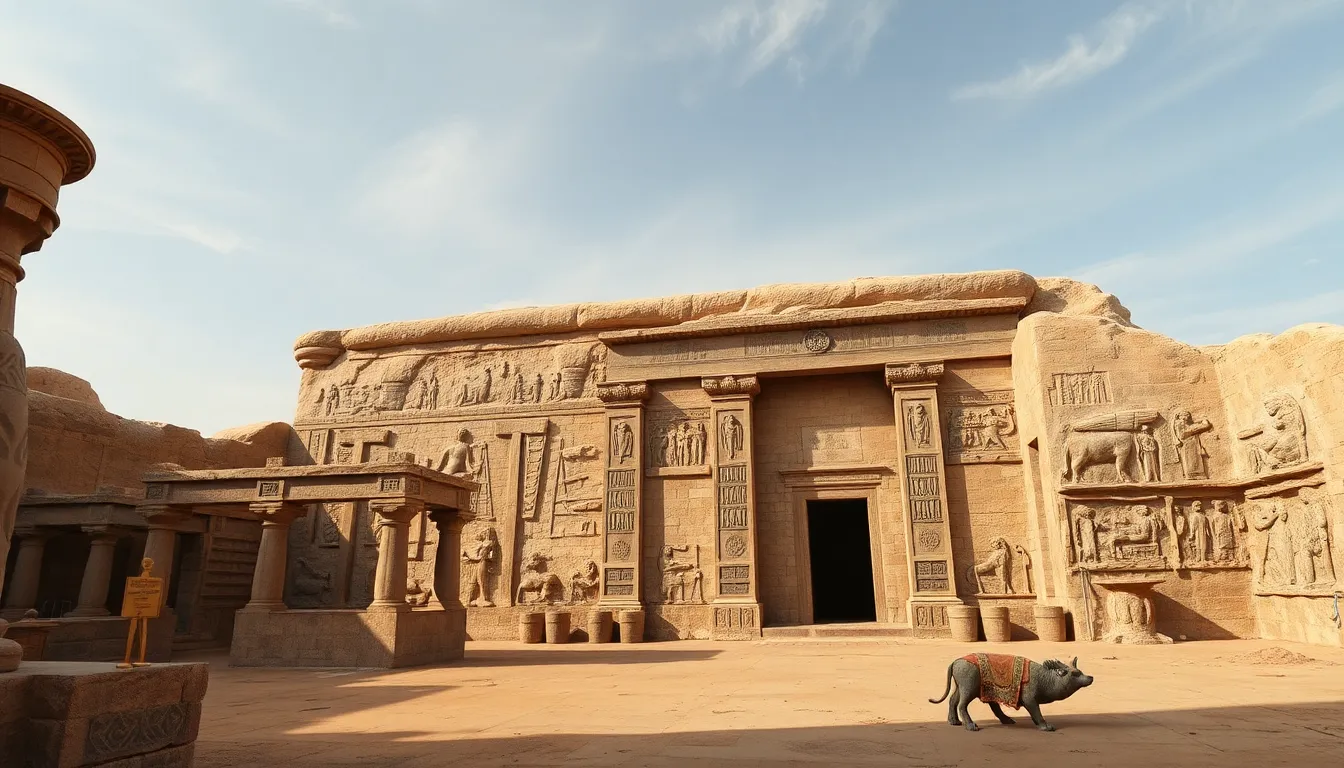The Tomb of Amunhotep I: An Ancient Royal Burial
I. Introduction
Amunhotep I was a pivotal figure in Ancient Egypt, reigning during the 18th Dynasty from around 1525 to 1504 BCE. His significance lies not only in his contributions to Egyptian civilization but also in the way he embodied the divine kingship that was central to ancient Egyptian society. Amunhotep I’s tomb, discovered in the Valley of the Kings, serves as a testament to the elaborate burial practices that were integral to Egyptian culture.
Royal burials in ancient Egypt were not merely about interring the dead; they were profound expressions of faith in the afterlife, with elaborate rituals aimed at ensuring a smooth transition to the next world. The discovery of Amunhotep I’s tomb in the late 19th century has provided invaluable insights into these practices and the artistry of the time.
II. Historical Context
The 18th Dynasty is often regarded as a golden age for Ancient Egypt, characterized by military conquests, vast wealth, and monumental architecture. This period saw the rise of powerful pharaohs who expanded Egypt’s influence and cultivated a rich cultural landscape.
Amunhotep I’s reign was marked by significant contributions to both religion and architecture. He is credited with building several temples, most notably the Temple of Karnak, which became a central place of worship for the god Amun. His reign also saw the evolution of burial practices, transitioning from the simpler tombs of earlier periods to the grand and intricate designs of the New Kingdom.
III. Discovery of the Tomb
The tomb of Amunhotep I was discovered in 1881 by a team of archaeologists led by Edward Ayrton, under the patronage of Theodore M. Davis. This excavation was critical as it unveiled a royal burial that had remained untouched for centuries, offering a rare glimpse into the past.
Key figures in the excavation included Ayrton and Davis, whose meticulous work laid the foundation for modern Egyptology. The initial findings from the tomb were astonishing, revealing an array of artifacts and the remarkably preserved mummy of Amunhotep I, which significantly advanced the understanding of royal burials in ancient Egypt.
IV. Architectural Features of the Tomb
The architectural layout of Amunhotep I’s tomb reflects the grandeur associated with royal burials of the New Kingdom. The tomb is characterized by its corridor leading to a large burial chamber, intricately designed with hieroglyphs and depictions of gods.
- Structure: The tomb consists of a long corridor that leads to a rectangular burial chamber, showcasing the linear design typical of royal tombs.
- Decorations: The walls are adorned with beautiful hieroglyphic inscriptions and paintings, illustrating scenes from the Book of the Dead, which guided the deceased through the afterlife.
When compared to other royal tombs from the same period, such as those of Tutankhamun and Ramses II, Amunhotep I’s tomb exhibits unique stylistic elements that highlight the artistic evolution of the time.
V. Artifacts and Burial Goods
The tomb of Amunhotep I contained a wealth of artifacts that underscore the beliefs of the ancient Egyptians regarding the afterlife. Among the significant items found were:
- Jewelry, including gold and semi-precious stones
- Canopic jars used for storing the deceased’s organs
- Funerary masks and statues
- Everyday items like pottery and tools, intended for use in the afterlife
These artifacts played a critical role in the beliefs surrounding the afterlife, as they were thought to provide the deceased with comfort and support in the journey beyond. The craftsmanship displayed in these items reflects the high level of skill and artistry present in ancient Egypt.
VI. Amunhotep I’s Mummy and Preservation
The mummy of Amunhotep I was particularly well-preserved, offering valuable insights into the mummification techniques used during the New Kingdom. The body showed signs of elaborate embalming practices, which included the use of resins and oils to prevent decay.
The discovery of Amunhotep I’s mummy has significant implications for Egyptology, as it provides a rare opportunity to study the physical remains of a pharaoh. Modern scientific analyses, including CT scans and DNA testing, have revealed much about the health, lineage, and burial practices of this ancient ruler.
VII. Cultural and Religious Significance
Amunhotep I holds a vital place in ancient Egyptian religion, often associated with the god Amun. His reign solidified the connection between the divine and the king, a belief that was foundational to Egyptian culture.
Rituals associated with royal burials were intricate and varied, encompassing a range of ceremonies aimed at honoring the deceased and ensuring their safe passage into the afterlife. The tomb of Amunhotep I influenced subsequent burial practices, setting a standard for future pharaohs.
VIII. Conclusion
The tomb of Amunhotep I is a remarkable archaeological site that offers significant insights into the historical and cultural practices of ancient Egypt. Its discovery has reshaped our understanding of royal burials and the importance of the afterlife in Egyptian society.
Ongoing research continues to unveil new findings and deepen our appreciation for the artistry and beliefs of this ancient civilization. The legacy of Amunhotep I and his tomb endures, reminding us of the intricate tapestry of history that defines the rich culture of ancient Egypt.




